STEINBECK, John. Autograph manuscript signed ("John Steinbeck"), an early draft of "Some Random and Randy Thoughts on Books," n.d. [ca. 1951]. 10 pages, folio (yellow, ruled legal paper) 12½ x 8in., in pencil .
STEINBECK, John. Autograph manuscript signed ("John Steinbeck"), an early draft of "Some Random and Randy Thoughts on Books," n.d. [ca. 1951]. 10 pages, folio (yellow, ruled legal paper) 12½ x 8in., in pencil . "THE BOOK HAS KEPT ITS PRECIOUS CHARACTER. A BOOK IS SOMEHOW SACRED" An early draft (with cross-outs and erasures) of Steinbeck's powerful essay on the importance of books. His reflections are wrapped within some satirical thoughts on how books are packaged and sold. "American books," he writes, "constitute packages and I imagine that the same rules which apply to pill boxes and canned food must apply to books... It is generally understood by publishers that if a one pound book is offered beside a two pound book, the heavier, thicker article is more desirable." Steinbeck suggested his publishers bind his books with lead, but they "have stupidly failed to follow" his suggestion. "And if the book were printed on rye bread it would be very much thicker... Readers would never lose their place since they would eat each page as they finished it... And people like to read while they eat." He then reflects more seriously on the cultural history of the book as a physical object--originally a status symbol for the rich and the learned at a time when books (and literacy) were scarce. He professes to be free of most of the attributes of bibliomania. He throws away dust jackets. "I have never asked for nor wanted an autographed book." He has no interest in fine bindings--"this is decoration to me, not literature." But he nevertheless marvels at the magic of the printed book, even in an age with many entertaining competitors and distractions. "It is wonderful that even today with all competition of records, of radio, of television, of motion pictures, the book has kept its precious character. A book is somehow sacred... One cannot conceive of a motion picture as being personal as a beloved book is personal. No television show is a friend as a book is a friend... I do not believe that a book can compete with its rivals on their terms. On the other hand they cannot compete with the book on its terms." He thinks book design and jackets should reflect the works' content. "If a book is full of pain, let it be painful in color and design, if it is beautiful and sharp, these should design its clothing. Just [as] a title should catch the essence of a book, so should its format." (A quality brilliantly captured in the famous dust jacket for Grapes of Wrath ; see lot 182.) Originally published in Freiman, ed., The Author Looks at Format (Am. Inst. of Graphic Arts, 1951); also included in Steinbeck, America and Americans, and Selected Nonfiction , 167-171.
STEINBECK, John. Autograph manuscript signed ("John Steinbeck"), an early draft of "Some Random and Randy Thoughts on Books," n.d. [ca. 1951]. 10 pages, folio (yellow, ruled legal paper) 12½ x 8in., in pencil .
STEINBECK, John. Autograph manuscript signed ("John Steinbeck"), an early draft of "Some Random and Randy Thoughts on Books," n.d. [ca. 1951]. 10 pages, folio (yellow, ruled legal paper) 12½ x 8in., in pencil . "THE BOOK HAS KEPT ITS PRECIOUS CHARACTER. A BOOK IS SOMEHOW SACRED" An early draft (with cross-outs and erasures) of Steinbeck's powerful essay on the importance of books. His reflections are wrapped within some satirical thoughts on how books are packaged and sold. "American books," he writes, "constitute packages and I imagine that the same rules which apply to pill boxes and canned food must apply to books... It is generally understood by publishers that if a one pound book is offered beside a two pound book, the heavier, thicker article is more desirable." Steinbeck suggested his publishers bind his books with lead, but they "have stupidly failed to follow" his suggestion. "And if the book were printed on rye bread it would be very much thicker... Readers would never lose their place since they would eat each page as they finished it... And people like to read while they eat." He then reflects more seriously on the cultural history of the book as a physical object--originally a status symbol for the rich and the learned at a time when books (and literacy) were scarce. He professes to be free of most of the attributes of bibliomania. He throws away dust jackets. "I have never asked for nor wanted an autographed book." He has no interest in fine bindings--"this is decoration to me, not literature." But he nevertheless marvels at the magic of the printed book, even in an age with many entertaining competitors and distractions. "It is wonderful that even today with all competition of records, of radio, of television, of motion pictures, the book has kept its precious character. A book is somehow sacred... One cannot conceive of a motion picture as being personal as a beloved book is personal. No television show is a friend as a book is a friend... I do not believe that a book can compete with its rivals on their terms. On the other hand they cannot compete with the book on its terms." He thinks book design and jackets should reflect the works' content. "If a book is full of pain, let it be painful in color and design, if it is beautiful and sharp, these should design its clothing. Just [as] a title should catch the essence of a book, so should its format." (A quality brilliantly captured in the famous dust jacket for Grapes of Wrath ; see lot 182.) Originally published in Freiman, ed., The Author Looks at Format (Am. Inst. of Graphic Arts, 1951); also included in Steinbeck, America and Americans, and Selected Nonfiction , 167-171.






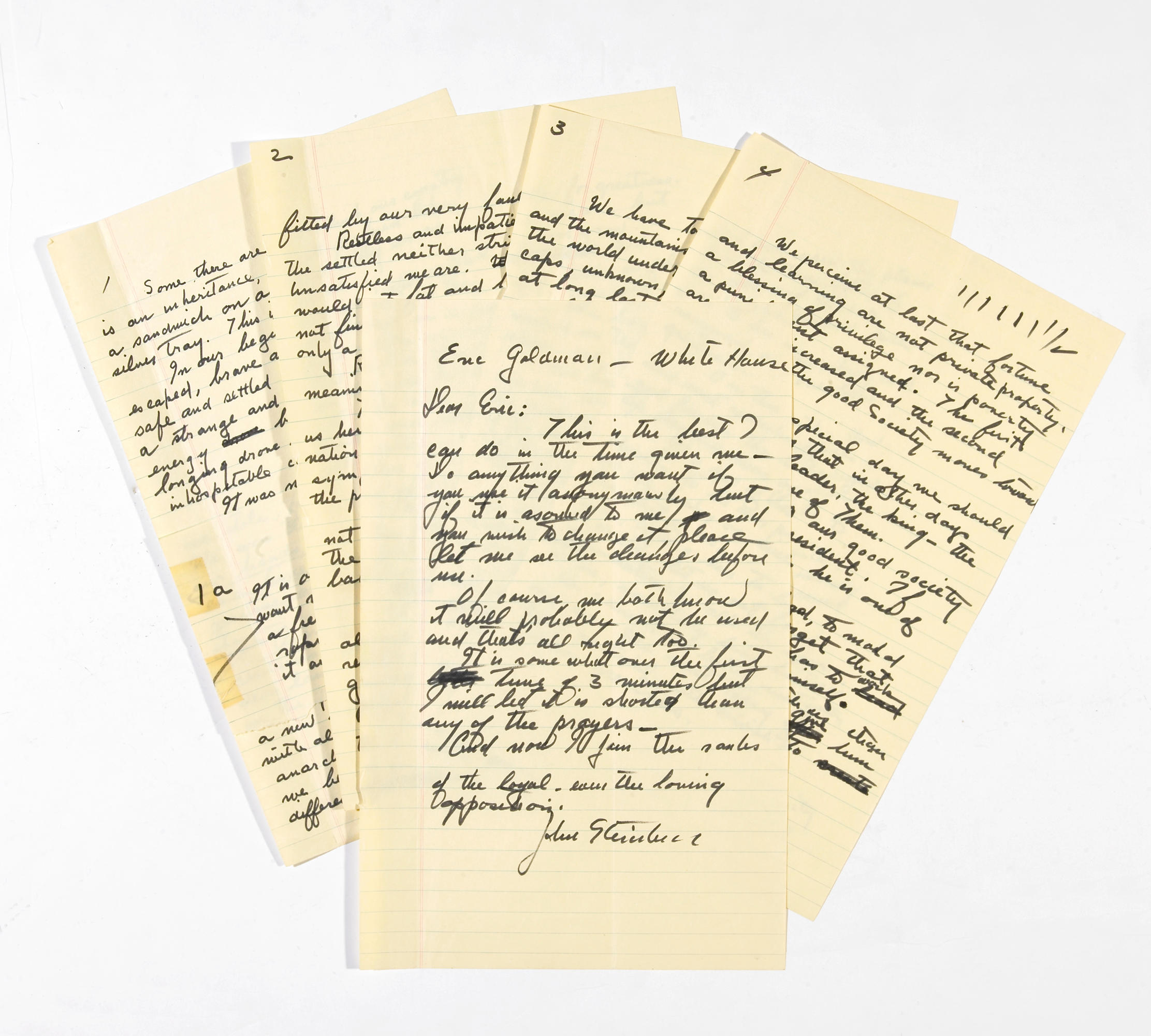

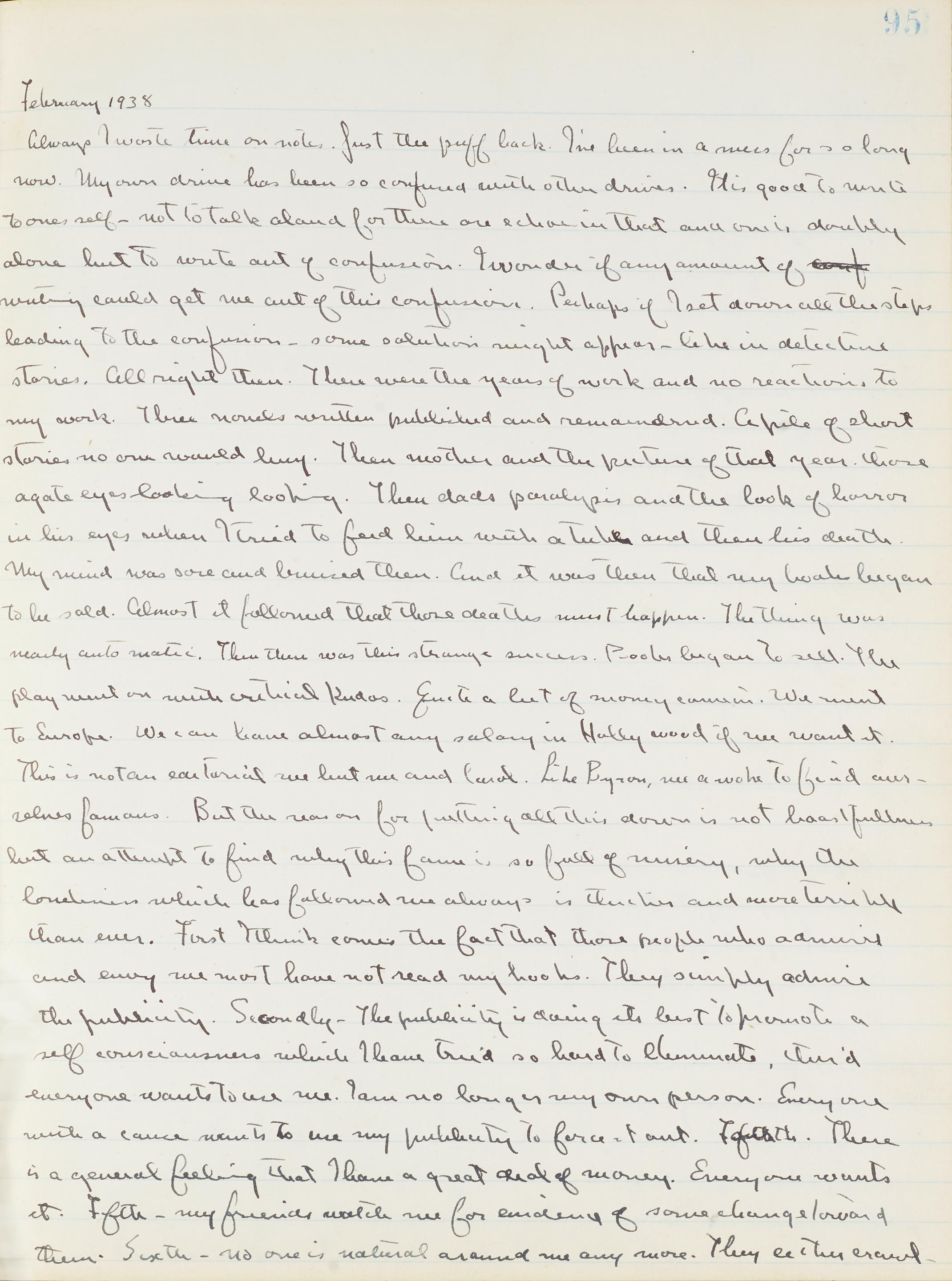
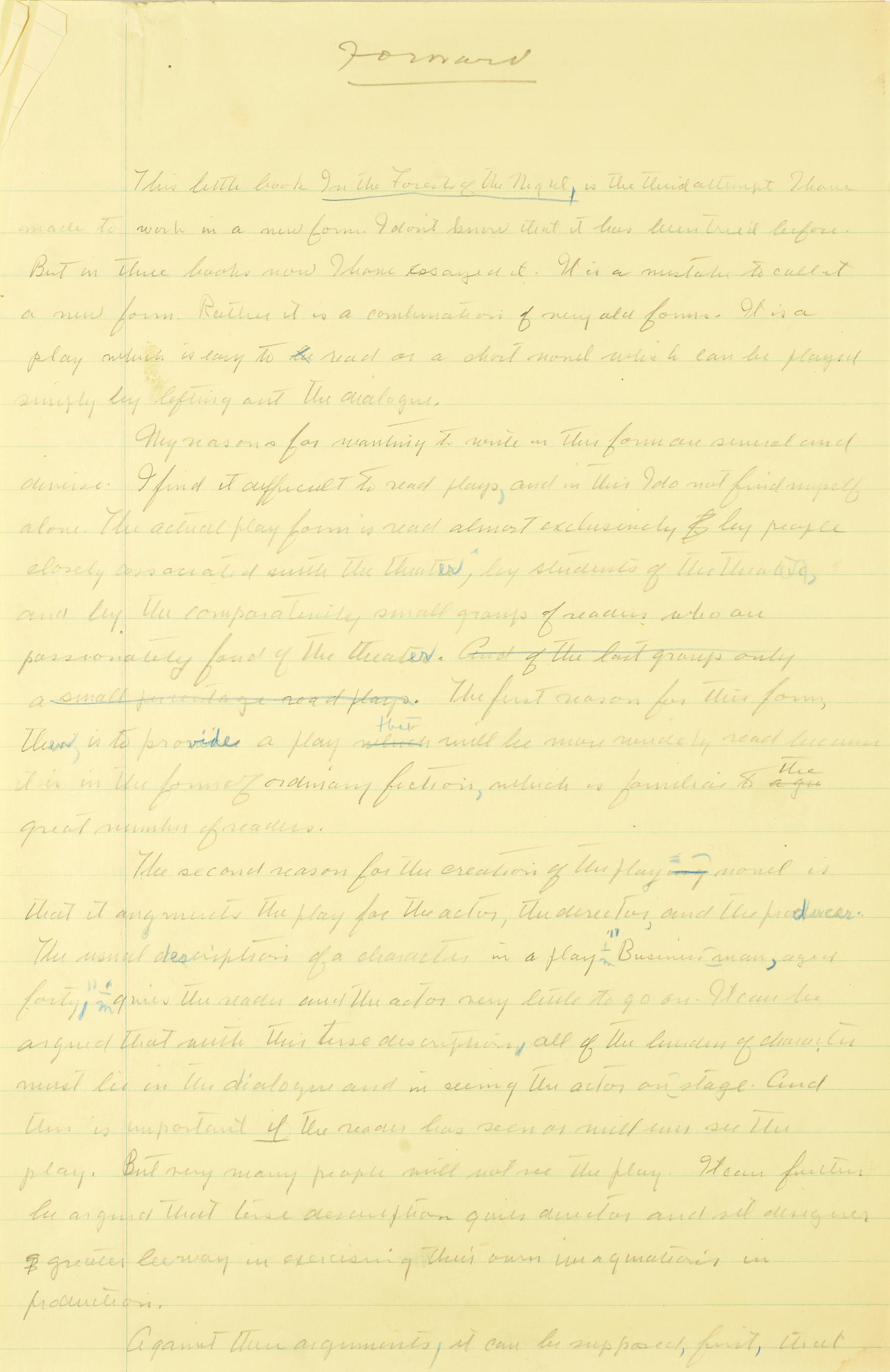

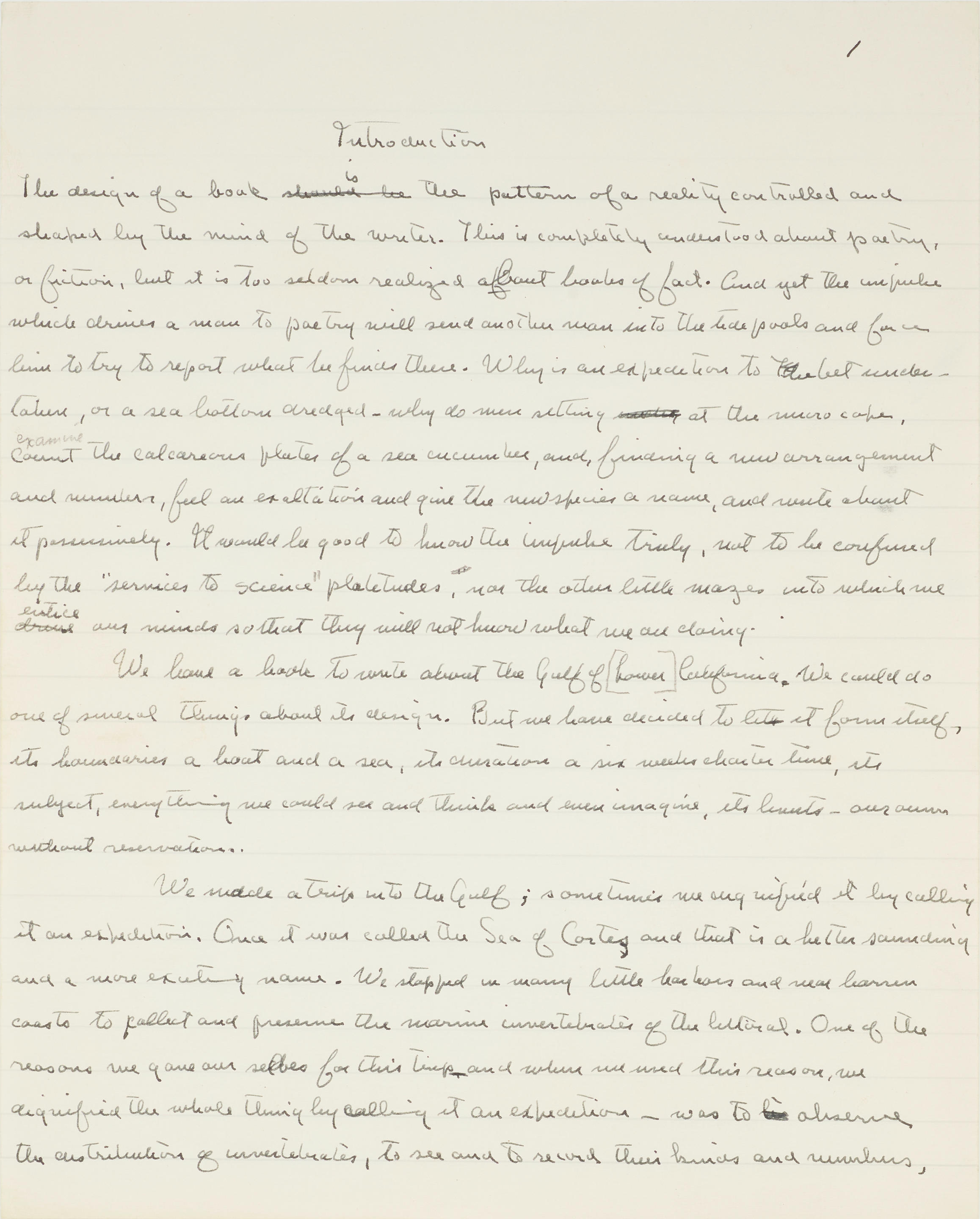

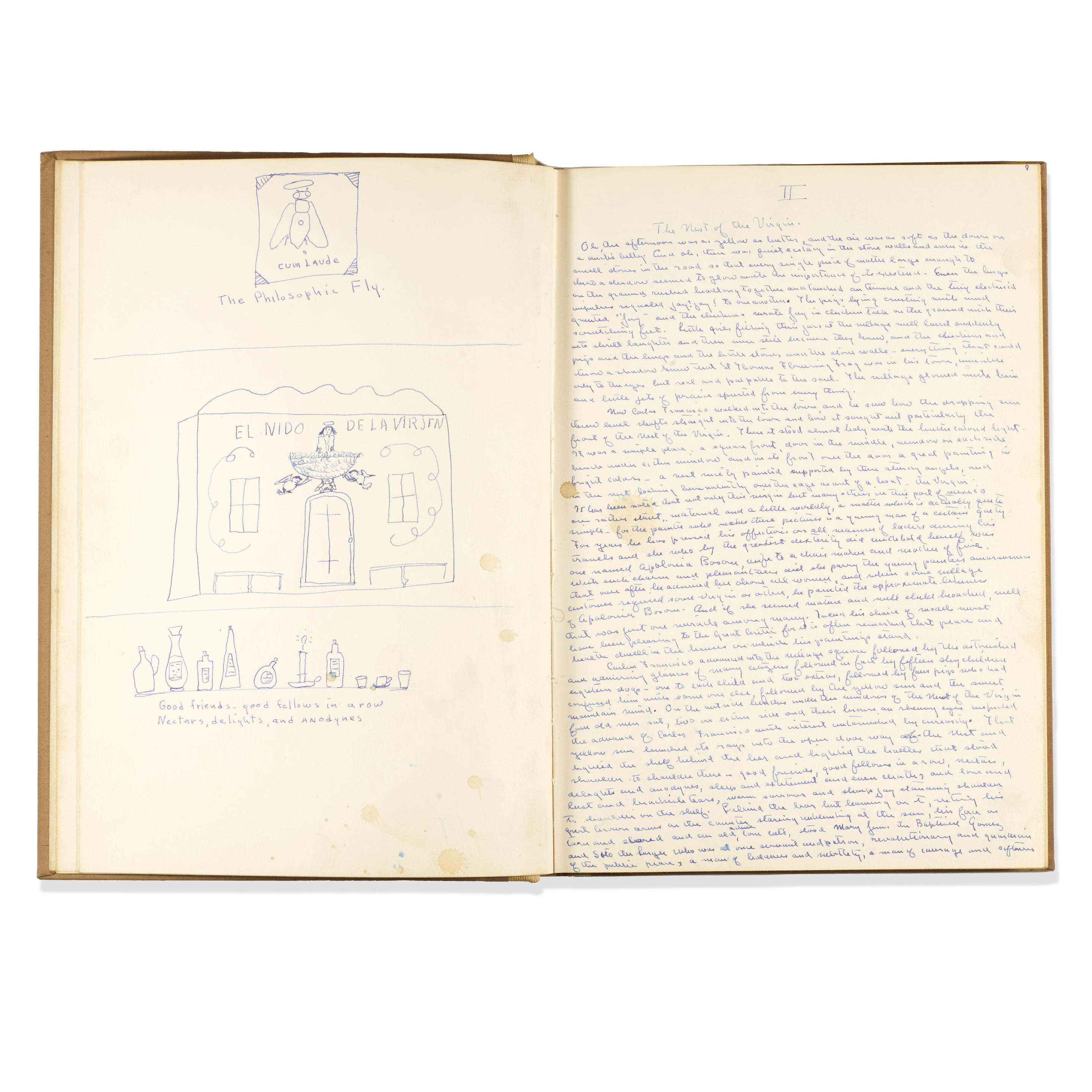
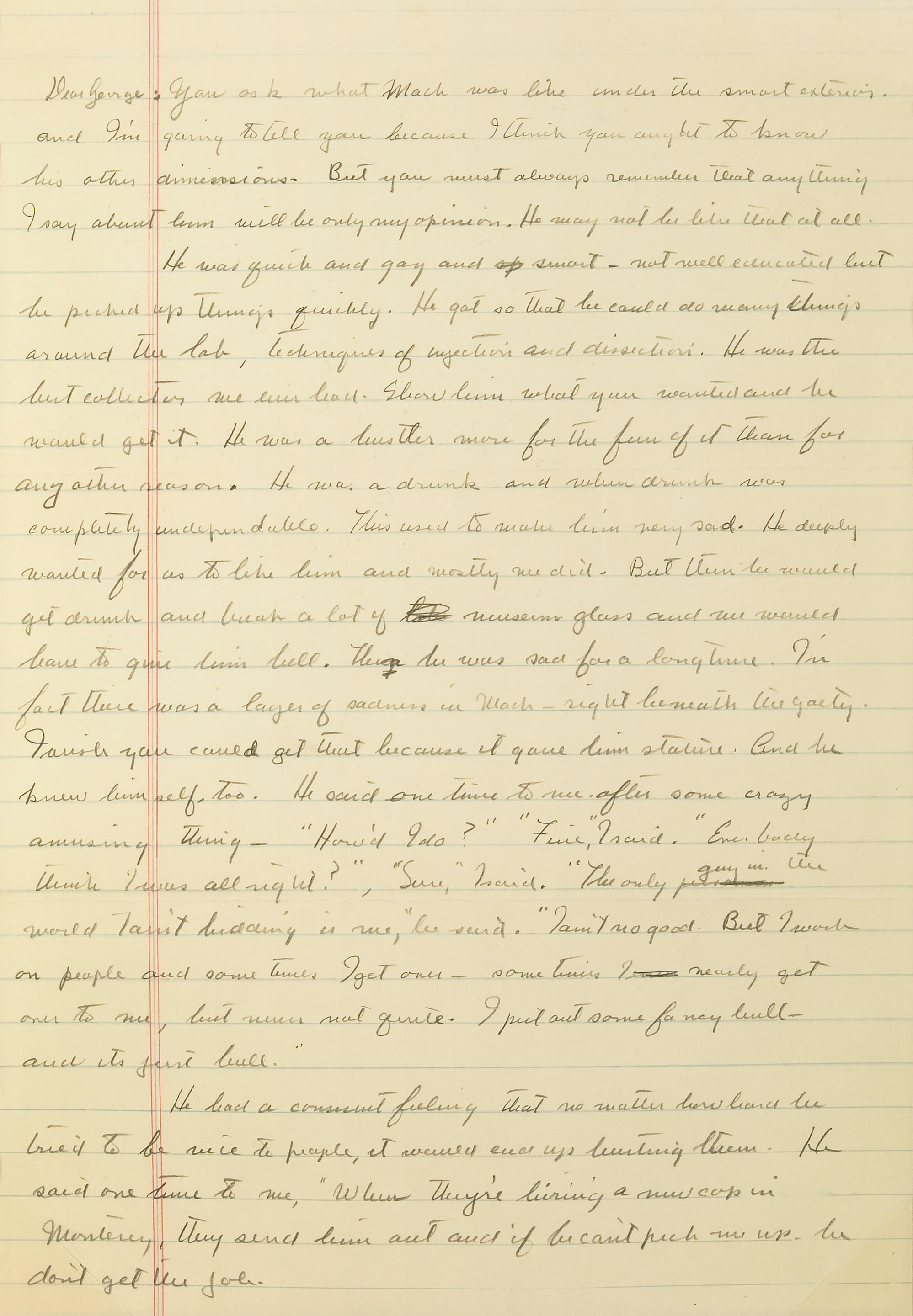
Testen Sie LotSearch und seine Premium-Features 7 Tage - ohne Kosten!
Lassen Sie sich automatisch über neue Objekte in kommenden Auktionen benachrichtigen.
Suchauftrag anlegen